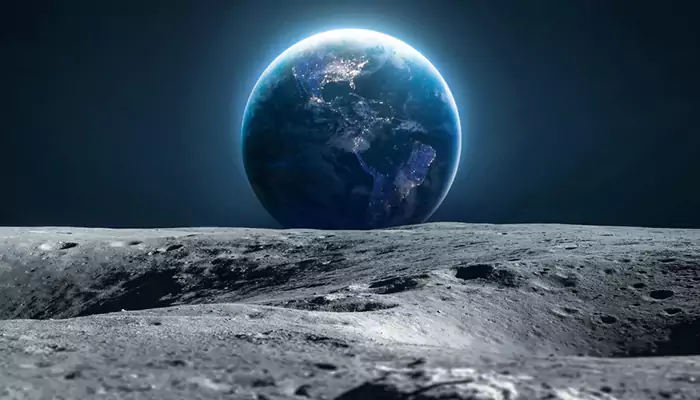Out of this world: 6 weird and wonderful solar system facts!
The things lurking in the universe can be wilder than the wildest sci-fi movies!
- Jayati
- 20 December, 2024
- 2 mins ago

Out of this world: 6 weird and wonderful solar system facts!
The things lurking in the universe can be wilder than the wildest sci-fi movies!
Get ready to be amazed by some mind-blowing facts about our solar system! But first, let’s break it down: our solar system is home to eight planets that orbit the sun—Mercury, Venus, Earth, Mars, Jupiter, Saturn, Uranus, and Neptune. Pluto used to be a planet too, but now it's classified as a dwarf planet. And it’s not just about planets—our solar system is filled with asteroids, comets, stars, moons, and other cosmic wonders. Dive in to discover some of the strangest and most fascinating facts about our cosmic neighbourhood!
The closest planet to the sun isn't the hottest!
You might think that Mercury, being closest to the sun, is the hottest planet, but that's not the case. Venus, the second planet from the sun, takes that title. Why Venus has a super-thick atmosphere, about 100 times thicker than Earth’s, which traps heat. This makes its surface temperature a sizzling 875°F on average. Mercury, on the other hand, has an average temperature of about 800°F. Even though it’s closer to the sun, Mercury’s thin atmosphere doesn’t hold heat as well as Venus’s dense one.
All planets fit between Earth and its moon!
Ever thought about fitting all the planets between Earth and the moon It's actually possible, depending on how you line them up. The varying distances and diameters make it tricky, though. Just imagine Saturn or Jupiter having to tilt sideways! It's a cool idea, but in reality, we'd have more than just a cosmic traffic jam to worry about. Our moon already gives us big tides—adding in the gravitational pull from Jupiter It'd be chaos!

Uranus rotates on its side!
Uranus often gets overlooked in those classroom solar system dioramas, but it's quite the oddball in our cosmic neighborhood. For starters, it's not just spinning like a top—it's tilted sideways, practically rolling around the sun on its side! Scientists believe this funky tilt is the result of a massive collision aeons ago. This unique orientation gives Uranus some seriously wacky seasons. Imagine, for about 21 Earth years, one half of the planet basks in constant sunlight while the other half shivers in darkness. And just when scientists thought they had it all figured out, Uranus surprised us with unexpected storms seven years after its 2007 equinox. It's like the planet enjoys keeping us on our toes!
In space, you could endure a few minutes in a faulty spacesuit!
You've seen those movies where space scenes get pretty wild, right But the real deal—being exposed to space—isn't quite as crazy! Sure, it's unpleasant, but you could actually hold on for a couple of minutes. After about 10 seconds, you'd pass out. The vacuum's lower pressure would make your blood and fluids boil, but oddly, that alone wouldn't do you in. Gas bubbles would pop up, making you swell, and the low humidity would cool you down fast—maybe even freeze your eyes over. Within one to two minutes, the lack of oxygen would become deadly.
A teaspoon of neutron star material equals the weight of humanity!
The density of a neutron star is beyond comprehension. These stars are essentially a giant mass of neutrons squeezed into a minuscule space. Just a teaspoon of this stuff would weigh over a trillion kilograms — more than the combined weight of the entire human population, which totals a few hundred billion kilograms. To match the density of a neutron star, we'd have to cram all of humanity into a space no larger than a sugar cube!
Some stars will forever remain beyond our sight!
Since the Big Bang, most celestial objects have been drifting apart, and the universe's expansion is accelerating. This revelation has shaken up cosmology in recent years. As distant regions of space move away faster, the earliest stars are now beyond our observational reach. Yet, we can still indirectly detect them through the energetic radiation they emit in their final stages.
Let's wrap up with another fascinating fact! Did you know that water is abundant throughout our solar system? It's not just on Earth; it's found in comets, asteroids, and even on planets and moons. Mercury and the Moon have ice tucked away in their shadowy craters, while Mars boasts ice at its poles and beneath its surface. Even smaller celestial bodies like Saturn's moon Enceladus and the dwarf planet Ceres harbour ice. And then there's Jupiter's moon Europa, suspected to have a massive ocean beneath its icy exterior, making it a prime candidate for alien life!





